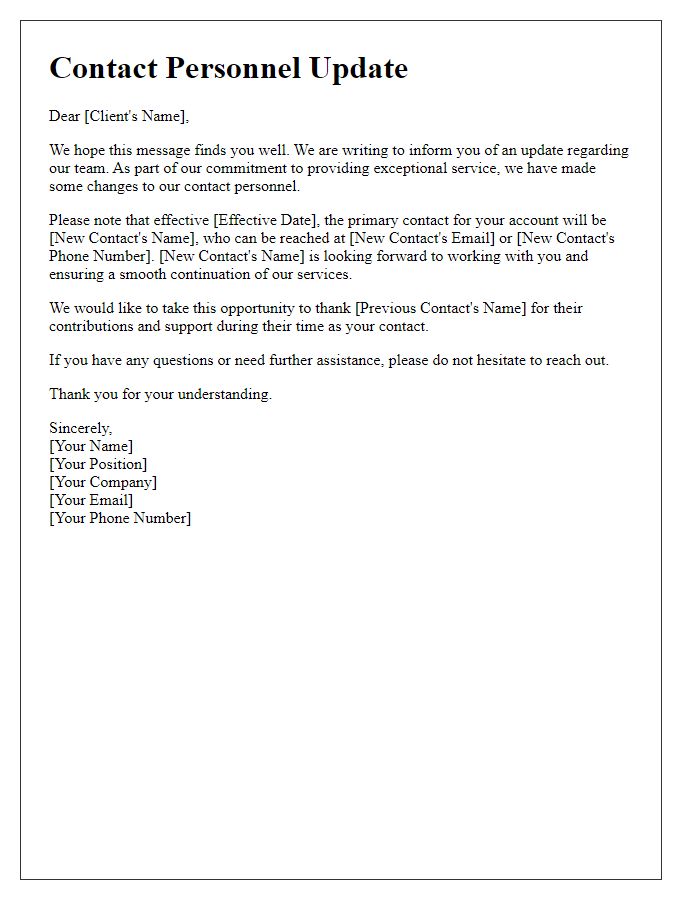Are you wondering how to effectively communicate a change in contact personnel within your organization? Introducing a new point of contact can be a thoughtful process, ensuring that everyone is informed and comfortable with the transition. In this article, we'll explore the best practices for crafting a compelling letter that not only conveys the necessary information but also fosters a sense of continuity and support. So, let's dive in to discover how you can make this transition as seamless as possible!

Clear subject line
Introducing a contact personnel change within an organization necessitates clarity and precision. A clear subject line is vital to ensure the message's purpose is immediately understood by recipients, such as "Announcement: Contact Personnel Change for [Department/Area Name]." This subject informs colleagues, clients, or partners about the change in a specific team or division. It prepares the reader for essential updates regarding the new contact's role, skills, and responsibilities. Including pertinent details such as the effective date of change, brief background information on the new contact, and how to reach them, ensures transparent communication. This process maintains relationships and fosters continuity, especially impactful in industries such as finance or healthcare, where consistent communication is crucial.
Greeting and introduction
Contact personnel changes within a company can significantly impact communication and collaboration. Transitioning staff members, such as a primary point of contact for client relations or project management, often requires effective communication to ensure continuity. Notifying stakeholders about an individual's departure, along with the introduction of a new representative, is critical. Clear details about the new contact's experience, such as years with the organization or specific expertise, can foster trust and reassure clients. Providing information about the reasons for the change, along with how to reach the new contact, ensures a seamless transition and maintains strong relationships.
Reason for personnel change
Introducing a contact personnel change is crucial for maintaining clear communication and ensuring a smooth transition within organizations. Due to recent organizational restructuring aimed at enhancing operational efficiency and addressing evolving business needs, we have appointed John Doe as the new client liaison. John brings over 15 years of experience in customer relations, having previously worked with XYZ Corporation (2015-2023) where he significantly improved client engagement by 25%. His expertise in handling complex projects and fostering relationships will ensure continuity and a high level of service for our partners. Your cooperation and support during this transition period are greatly appreciated.
Introduce new contact person
A recent personnel change at XYZ Corporation has resulted in John Smith assuming the role of primary contact for all partnership communications. John, who has over five years of experience in business development, will replace the previous contact, Mary Johnson, effective immediately. He has successfully managed several high-profile projects, demonstrating excellent communication and organizational skills. For any inquiries, collaboration opportunities, or support needs, please reach out to John at john.smith@xyzcorporation.com or via phone at (555) 123-4567. The transition aims to enhance responsiveness and strengthen our ongoing relationships with partners.
Closing and contact information
In the context of business communications, introducing a contact personnel change involves notifying stakeholders of updates to contact details or personnel roles. Effective communication ensures a seamless transition for maintaining relationships. Including clear contact information is crucial for future interactions. For example, name, email address, and phone number provide necessary details for follow-up discussions. Additionally, expressing gratitude for past collaboration fosters goodwill as stakeholders adjust to the change. This approach encourages ongoing support and engagement, essential for business continuity and success.













Comments